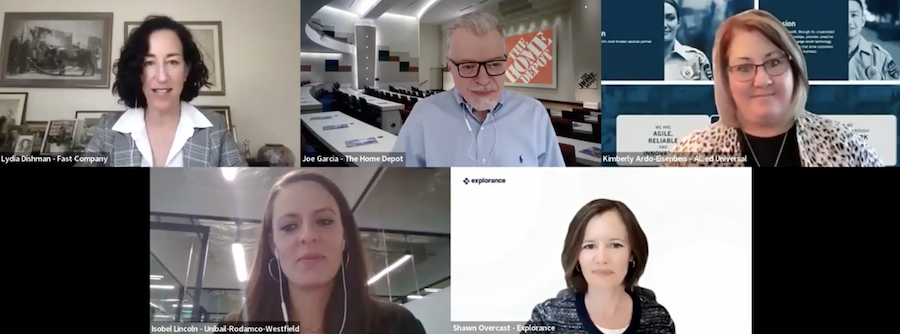The Keys to Employee Engagement in Today’s Workplace


A positive company culture can power strong engagement with employees, with business yielding benefits like higher productivity and profitability. As senior director of talent management and organizational effectiveness at The Home Depot, Joe Garcia knew the secret to strong employee engagement came with finding the right employees first.
“When we start to go deep into trying to understand what drives engagement, we often think about the environment, the effectiveness of leaders, and the work-life balance,” Garcia said. “But we don't always spend a ton of time thinking if we are selecting folks that are likely to be a good fit for the role and the culture of the company.”
With approximately 475,000 associates, Garcia discovered his high-performing associates had distinguishable qualities such as having a high desire to help others and openness to learning.
“That propensity and desire to learn was a big predictor of success so we built assessments and structured interview guides with questions that are attempting to measure not only your experience but also your culture fit with clear anchors,” said Garcia.
At From Day One’s March virtual conference, Garcia and a panel of other leaders joined Lydia Dishman, senior editor of growth and engagement at Fast Company, in a discussion on how to effectively drive employee engagement in today’s workplace.
Providing Employees with Learning Opportunities
With a remote workforce, vice president of human resources and recruiting at Allied Universal Security Services, Kimberly Ardo-Eisenbeis knew she would have to find creative strategies to engage her employees.
After trial-and-error of different strategies, Ardo-Eisenbeis found offering small micro-learning opportunities was the sweet spot for her employees.
“We have an amazing talent and development team that puts together these small micro-learnings that are five to ten minutes long. These nuggets are meaningful and can help engage our employees because these are not just checking-the-box learning, but information that somebody can then act on,” Ardo-Eisenbeis said.
For Ardo-Eisenbeis, the key was to value the quality of engagement over quantity. “Rather than sitting someone in a classroom or having virtual learnings where there’s not much appetite, we learned that these small micro-learnings can still fill the bucket,” Ardo-Eisenbeis said. “When it comes to learning, it’s not always about quantity but about the quality and the intention, and what somebody can do with that information.”

Learning and development can also be powerful drivers in employee engagement, with 80% of employees reporting that learning and development opportunities would help them feel more engaged at work.
Wielding learning as a form of engagement can also help benefit other areas of the business, Shawn Overcast, chief insights officer of Explorance said.
“Learning matters as a driver of engagement and career development. Not only does learning aim to help us build skills and help to inform somebody's career development, but it also allows us to listen,” Overcast said. “As we formally bring people together and ask them questions about their experience, [learning] acts as a listening hub and an opportunity to network which can support functional collaboration, relationship building, and further build trust and psychological safety in the organization.”
Charting Different Career Paths
The shift from traditional linear career paths to non-linear paths is increasingly more common, with 52% of U.S. workers having considered a job change, and as many as 44% having actual plans to make the change last year. The finding is in line with what commercial real estate company, Unibail-Rodamco-Westfield, currently is seeing.
“We lean into internal mobility and allow people to move from one function to an entirely different one. So, we’ve seen big bold moves, like people moving from finance to IT or people moving from marketing to sales,” Isobel Lincoln, senior vice president of human resources, said.
Allowing workers to explore different career paths can prove beneficial to companies as it allows employees to continue to grow and learn new skill sets while remaining at a single organization. Workers who have moved internally have a 64% chance of remaining with an organization after three years, according to LinkedIn data. In contrast, only 45% of employees who haven’t moved internally have a smaller likelihood of staying with the company after three years.
Lincoln already sees the benefits of internal mobility in her company. “More than half of my HR team have come from other parts of the business so it's working for us because we get to retain those employees for much longer.”
Wanly Chen is a writer and poet based in New York City.
The From Day One Newsletter is a monthly roundup of articles, features, and editorials on innovative ways for companies to forge stronger relationships with their employees, customers, and communities.